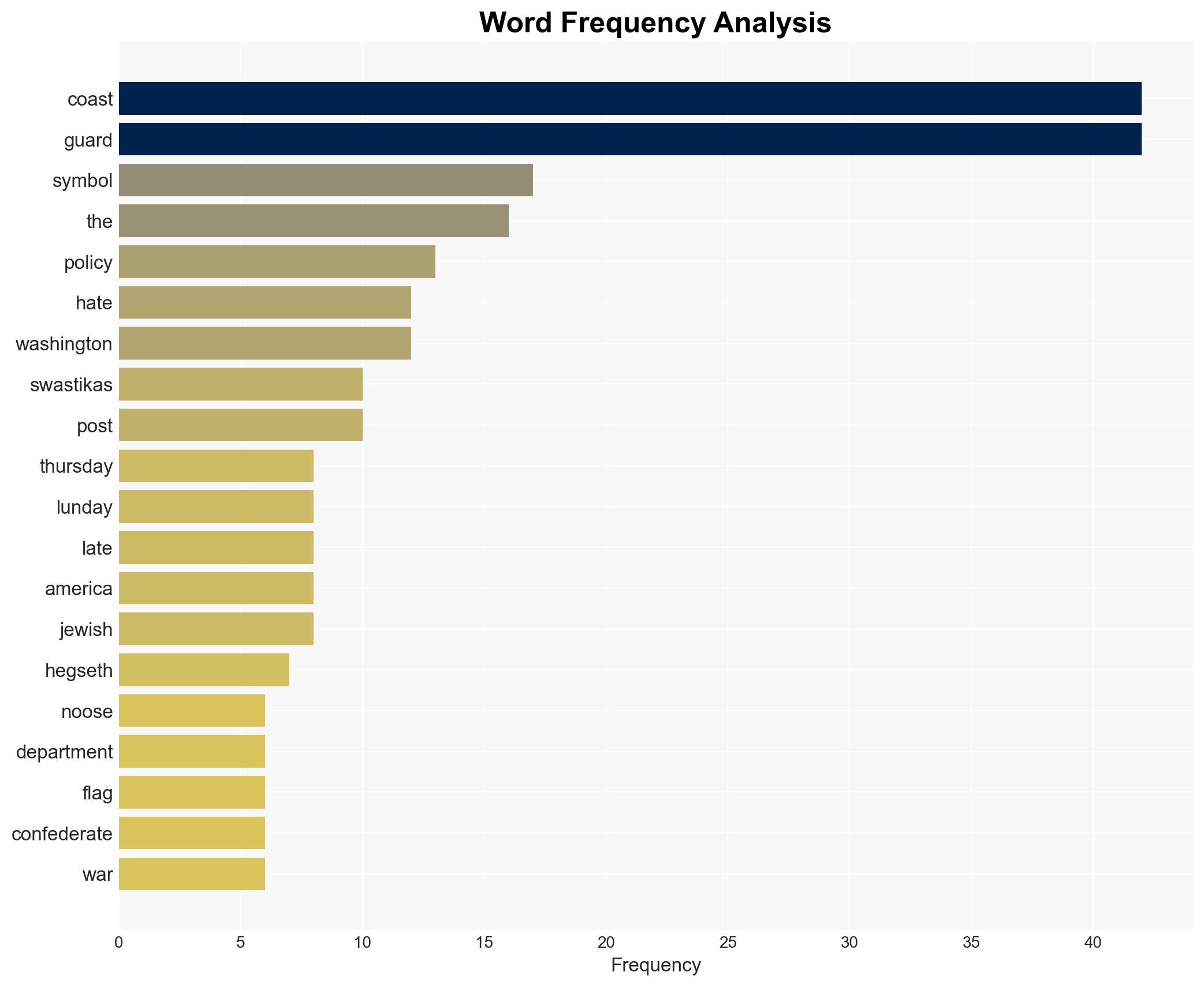US Coast Guard denies claim it will stop classifying swastikas as hate symbols Categorically false – New York Post
Published on: 2025-11-21
AI-powered OSINT brief from verified open sources. Automated NLP signal extraction with human verification. See our Methodology and Why WorldWideWatchers.
Intelligence Report:
1. BLUF (Bottom Line Up Front)
The most supported hypothesis is that the US Coast Guard is maintaining its current policy of classifying swastikas and similar symbols as hate symbols, despite reports suggesting otherwise. The strategic recommendation is to closely monitor the situation for any policy changes and potential misinformation campaigns. Confidence level: Moderate.
2. Competing Hypotheses
Hypothesis 1: The US Coast Guard is maintaining its policy of classifying swastikas and other symbols as hate symbols, and the reports suggesting a change are inaccurate or misinformed.
Hypothesis 2: The US Coast Guard is considering a policy change regarding the classification of hate symbols, and the denial is a strategic move to manage public perception and internal dissent.
Hypothesis 1 is more likely due to the categorical denial by the US Coast Guard and the lack of corroborating evidence for a policy change. Hypothesis 2 lacks substantial evidence and relies on speculative assumptions about internal Coast Guard deliberations.
3. Key Assumptions and Red Flags
Assumptions: The US Coast Guard’s public statements are accurate and reflect current policy. Media reports may contain inaccuracies or misinterpretations.
Red Flags: The Washington Post’s report could indicate a potential leak or miscommunication within the Coast Guard. The timing of the report and subsequent denial may suggest an attempt to control a narrative.
Deception Indicators: The swift and categorical denial by the Coast Guard could be an attempt to quickly quell controversy, which may suggest sensitivity to the issue.
4. Implications and Strategic Risks
The primary risk is the potential for misinformation to spread, leading to public confusion and erosion of trust in the Coast Guard. Politically, this could escalate into a broader debate on military policies regarding hate symbols, potentially affecting inter-agency relations and public perception. There is also a risk of cyber misinformation campaigns exploiting this narrative to sow discord.
5. Recommendations and Outlook
- Monitor media outlets and official Coast Guard communications for updates or clarifications on policy.
- Engage with the Department of Homeland Security to ensure alignment and clarity in messaging.
- Best-case scenario: The issue is resolved with clear communication, maintaining public trust.
- Worst-case scenario: Misinformation spreads, leading to public distrust and potential policy changes under pressure.
- Most-likely scenario: The Coast Guard maintains its current policy, and the issue gradually diminishes in public discourse.
6. Key Individuals and Entities
Admiral Kevin Lunday, acting commandant of the US Coast Guard.
The Washington Post, as the primary media outlet reporting the alleged policy change.
7. Thematic Tags
Structured Analytic Techniques Applied
- Cognitive Bias Stress Test: Structured challenge to expose and correct biases.
- Bayesian Scenario Modeling: Use probabilistic forecasting for conflict trajectories or escalation likelihood.
- Network Influence Mapping: Map relationships between state and non-state actors for impact estimation.
Explore more:
National Security Threats Briefs ·
Daily Summary ·
Support us





